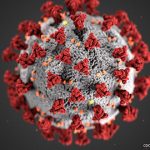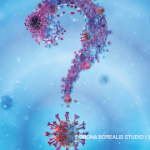Worldwide Vaccine Development
According to the World Health Organization, more than 200 COVID-19 vaccines are currently in development worldwide. Dr. Barouch pointed out that, in the past, successful vaccines have taken several years or more to develop. “The development of a COVID-19 vaccine, or potentially multiple vaccines in approximately one year, would truly be unprecedented,” he said.
In July, an RNA-based vaccine produced by Moderna and the National Institutes of Health became the first COVID-19 vaccine to begin phase 3 clinical trials. A second RNA-based vaccine, developed by Pfizer and BioNTech, followed shortly. Six vaccine programs in the U.S. are currently engaged in phase 3 trials (or are expected to be very shortly), each enrolling 30,000–60,000 participants. These vaccines employ several different strategies, including RNA-based approaches, protein-based approaches, and the adenovirus vector-based approach developed by Dr. Barouch and colleagues. Four to five additional phase 3 trials are taking place internationally.
Developers have used a number of strategies to accelerate the timeline of vaccine development. Many manufacturers have used vaccine platforms that had previously been tested for other pathogens, facilitating both manufacturing and relevant regulatory issues. For example, this applied to the adenovirus vector (Ad26) chosen by Dr. Barouch and colleagues for their vaccine.
As another strategy to speed up vaccine availability, Dr. Barouch noted, “Many of the lead developers are mass producing their vaccines now, as we speak, while their clinical trials are still ongoing, even before they know whether their vaccine is safe and effective in humans.” Prior to this, such an approach would have been unthinkable in terms of financial risk.
Dr. Barouch underscored this manufacturing aspect of the problem. “The timeline to show efficacy in clinical trials is actually not the most relevant timeline in my opinion,” he said. “The most relevant timeline is the one needed to produce and deploy and administer billions of doses of vaccine worldwide.”
Partly because of these manufacturing challenges, Dr. Barouch emphasized the need for multiple lines of vaccine research: “No single vaccine developer can supply a global market of 7 billion people—potentially up to 14 billion doses [if two shots are needed]—so we actually want and need multiple vaccines to be successful. So this is not a race of one company or one group against another group.”
Additionally, not all the developed vaccines will have identical properties. Some may be safer, some more protective or provide longer lasting immunity. Some may be easier to manufacture and more deployable at a practical level. Some require deep freezing for storage, but others do not. And some may be better suited to special populations, such as children or the immunosuppressed. This is another important reason that multiple vaccines be pursued simultaneously.



